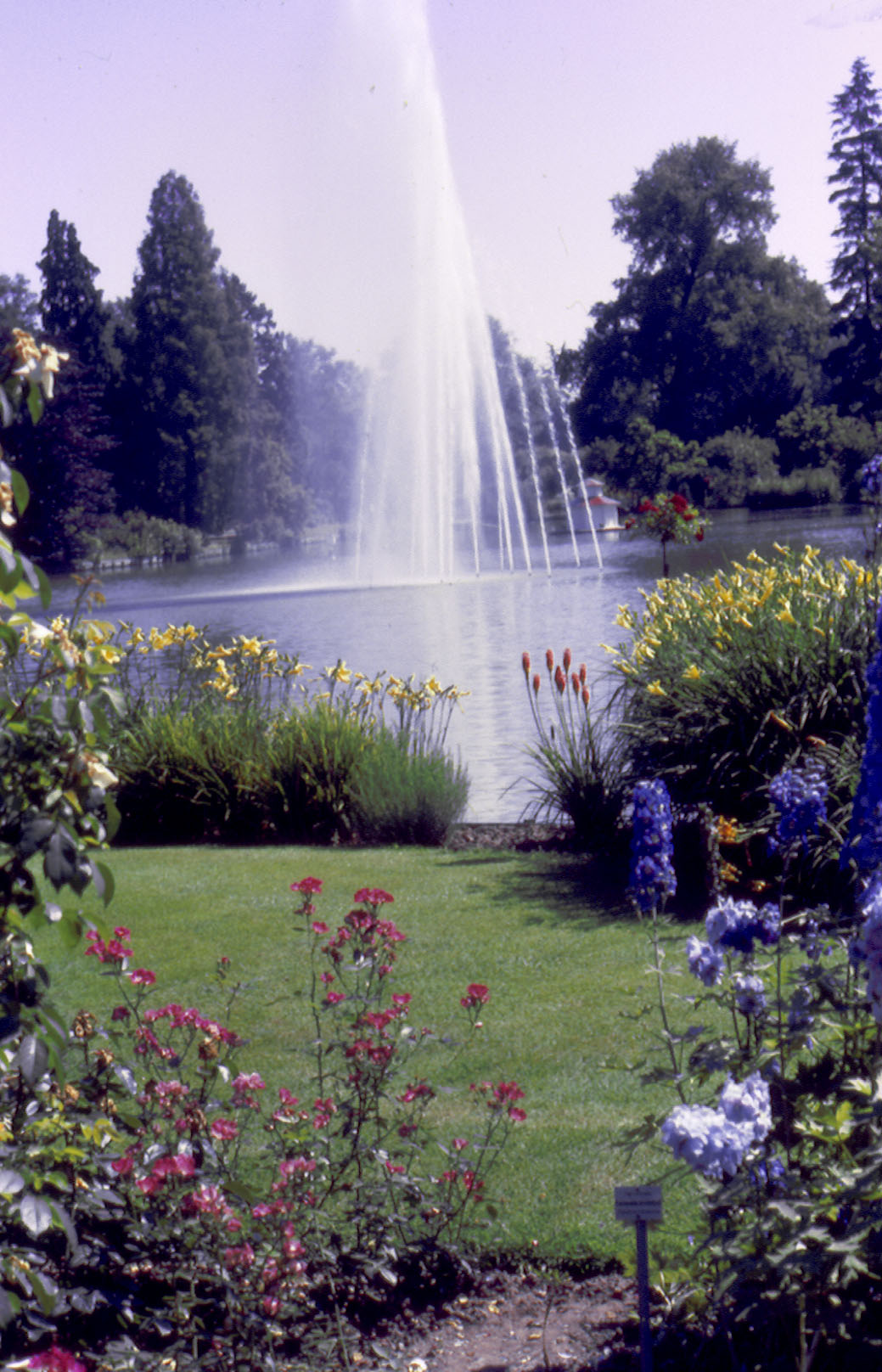"§"
The Wedgewood Rose - Rose
Der Markenname "Wedgwood" ("Wedgwoodware") geht zurück auf den Keramikhersteller "Josiah I. Wedgwood" (Wedgwood, 1730-1795) der "Waterford Wedgwood" (Crystal, china, & cookware / Ireland) im Jahr 1759 gründete und "Jaspisware" in England einführte.
"Wedgwood", der Name des englischen Kunsttöpfers "Josiah Wedgwood" (1730-1795), wurde geradezu zum Inbegriff für "feines, verziertes Steingut". Josiah Wedgwood (Großvater von Charles Darwin) hatte Verfahren entwickelt um die meist dunkelfarbigen Scherben der Töpfereiwaren (rote Ware) aufzuhellen. Ergebnisse dieser Arbeit waren die so genannte "Creamware", "Cream-Ware" ("cremefarbenes Steingut", ab 1765 unter dem Namen "Queensware", "Queens-Ware") und die "Basaltware" ("Ägyptisches Schwarz"), die vor allem für Ziergegenstände verwendet wurde. Im Jahr 1774/1775 erfolgte die Einführung der noch heute für die Wedgwood-Manufaktur typische "Jasperware", ein hartes einfarbiges Steinzeug in Lichtblau, Zartgrün, Gelb, Rosa oder Schwarz.
Josiah I. Wedgwood war so erfolgreich, dass er sich "Potter of her Majesty", "Töpfer seiner Majestät", nennen durfte.
Die engl. "Jaspisware", dt. "Jasperware" - eine der bekanntesten Kreationen Wedgwoods -, ein feines, unglasiertes, lichtdurchlässiges Steinzeug wurde im Jahr 1775 von Josiah Wedgwood entwickelt. Die durchgängige Färbung der zunächst weißen Masse erfolgte mit Hilfe von Metalloxiden. Am bekanntesten ist die zartblaue Jasperware mit aufgelegten klassizistischen weißen Reliefs.
Das Unternehmen hatte alle Stürme der letzten 250 jahre überlebt und ist heute die größte Porzellan-Manufaktur in Großbritannien.
Engl. "wedge" bezeichnet einen dt. "Keil", so daß engl. "wedgwood" mit dt. "Keilholz" übersetzt werden kann.
| 00 Hinweis: ----------------------------------- | Hinweis: -------------------------------------------------------------- |
| 01 Hinweis: Bild |  |
| 02 Hinweis: Bemerkung | |
| 03 Hinweis: Literatur | |
| 10 Name: -------------------------------------- | Name: ----------------------------------------------------------------- |
| 11 Name: Sortier Name | |
| 12 Name: Exhibition Name | |
| 13 Name: Registration Name | |
| 14 Name: Synonyme | The Wedgewood Rose, AUSjosiah |
| 15 Name: Auszeichnungen / Awards | |
| 20 Genealogie: -------------------------------- | Genealogie: ----------------------------------------------------------- |
| 21 Genealogie: Gattung / Sektion / Art | Englische Rose |
| 22 Genealogie: Elternrosen / Herkunft / Parentage | |
| 23 Genealogie: Kinderrosen / Nachkommen | |
| 24 Genealogie: Sports / Mutationen | |
| 25 Genealogie: Verwendung / Utilisation / Gebruik / Use | Kletterrose, Strauchrose |
| 26 Genealogie: Erscheinungsjahr / DOB (Date of Birth) | vor 2009 |
| 27 Genealogie: Züchter / Entdecker / Breeder / Hybridizer | David Austin, England, GB |
| 30 Blüte: ------------------------------------- | Blüte: ---------------------------------------------------------------- |
| 31 Blüte: Farbe / Bloemkleur / Flower Colour | hellrosa, rosa |
| 32 Blüte: Duft / Fragrance / Geurend / Scent Strength | fruchtig, stark duftend |
| 33 Blüte: Eigenschaften / Flowering Habit | |
| 34 Blüte: Blütenblätter-Anzahl / Petals | |
| 35 Blüte: Form / Forme de la fleur / Bloom Shape | |
| 36 Blüte: Größe / Bloem / Bloom Size | |
| 37 Blüte: Typ / Bloom Type | |
| 38 Blüte: Zeit / Floraison / Bloeitijd / Flowering Period | Öfterzublühend |
| 39 Blüte: Bienenfreundlichkeit | |
| 40 Pflanze: ----------------------------------- | Pflanze: -------------------------------------------------------------- |
| 41 Pflanze: Blätter, Laub / Feuillage / Foliage | dunkelgrün, glänzend |
| 42 Pflanze: Dornen / Stacheln / Thornyness | |
| 43 Pflanze: Hagebutten / Hips / Hip Colour / Hip Shape | |
| 44 Pflanze: Knospen / Buds | |
| 45 Pflanze: Stiele / Stems | |
| 50 Wuchs: ------------------------------------- | Wuchs: ---------------------------------------------------------------- |
| 51 Wuchs: Form / Vorm / Growth Habit | strauchförmig, üppig mit vielen Trieben |
| 52 Wuchs: Abstand / Dist. de plantation | |
| 53 Wuchs: Höhe / Taille / Height / Hauteur | 150 bis 300 cm |
| 54 Wuchs: Weite / Width | |
| 60 Gesundheit: -------------------------------- | Gesundheit: ----------------------------------------------------------- |
| 61 Gesundheit: Bodenansprüche / Cultivation | |
| 62 Gesundheit: Bakterien, Pilze, Viren | |
| 63 Gesundheit: Tierische Schädlinge | |
| 64 Gesundheit: Hitze | |
| 65 Gesundheit: Kälte | |
| 66 Gesundheit: Nässe | |
| 67 Gesundheit: Trockenheit | |
| 68 Gesundheit: Schatten | |
| 99 -------------------------------------------- | ----------------------------------------------------------------------- |
"Wedgewood Blue" als Farbe: - #a6bdd7 - Wedgewood Blue
"Wedgewood Blue" als Farbe: - #6c92af - Wedgewood Blue
"Wedgewood Blue" als Farbe: - #baacc7 - Wedgewood Blue
"Wedgewood Blue" als Farbe: - #837da2 - Wedgewood Blue
"Deep Wedgewood Blue" als Farbe: - #62639b - Deep Wedgewood Blue
"Dark Wedgewood" als Farbe: - #423c63 - Dark Wedgewood
"Dark Wedgewood" als Farbe: - #413d51 - Dark Wedgewood
"Light Wedgewood" als Farbe: - #4a545c - Light Wedgewood
"Wedgewood Green" als Farbe: - #8b8940 - Wedgewood Green
"Wedgewood Green" als Farbe: - #f0d698 - Wedgewood Green
"Wedgewood Green" als Farbe: - #90845b - Wedgewood Green
(E?)(L?) http://www.davidaustinroses.com/german/showrose.asp?showr=5937
...
Benannt nach der berühmten Wedgwood-Porzellanmanufaktur, die dieses Jahr ihr 250-jähriges Bestehen feiert.
...
(E?)(L?) http://www.welt-der-rosen.de/duftrosen/duftrosen.htm
(E?)(L?) http://www.welt-der-rosen.de/namen_der_rosen/was_namen_der_rosen.htm
The Wedgewood Rose (5/2012)
Erstellt: 2013-12